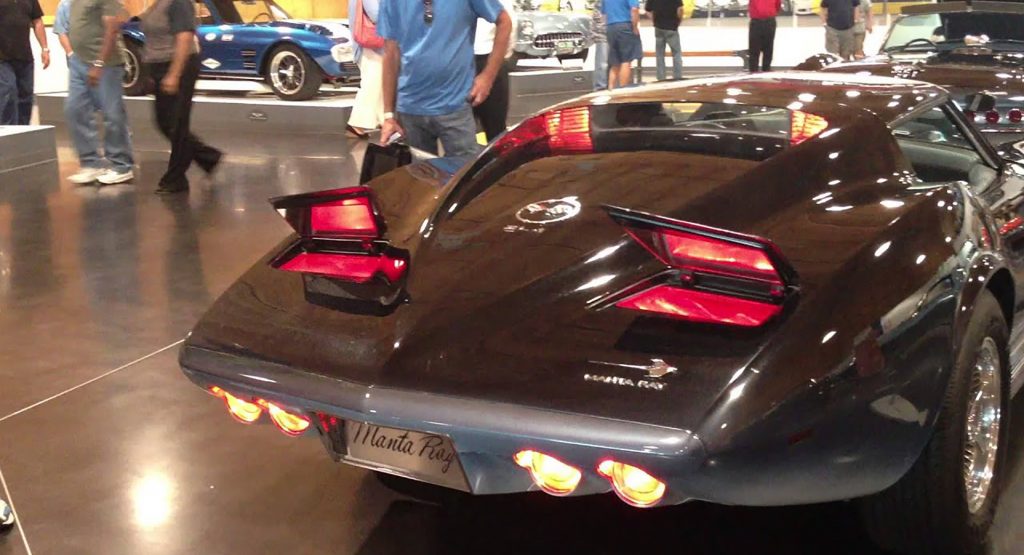We’ve all seen pop-up headlights before. The neat little feature that cleaned up the look of many cars could be found as far back as the ’30s and stuck around until about the late ’90s. A bit more obscure than those were the pop-up turn signals called “trafficators” that existed on a few European cars. However, has anyone ever heard of pop-up brake lights?
We guess not, yet they adorned the 1969 Chevrolet Corvette Manta Ray concept.
The Manta Ray was actually a retooled version of GM’s Mako Shark II concept, which itself was a development from the original 1963 Mako Shark study. In addition to the new all-aluminum 427ci ZL-1 V8 engine, the Manta Ray’s revisions included a front spoiler, redesigned grille and exhaust pipes, a buttress-style rear window, and of course, the pop-up brake lights.
Read More: Chevy’s Experimental Vehicles Paved The Way For The Mid-Engined Corvette C8
Interestingly enough, it wasn’t actually the car’s brake lights themselves that popped up, but a set of mirrors. The mirrors would flip up under heavy braking and the actual brake lights, which were inside the car facing upwards, would reflect off of them. Something else that’s interesting about them is that there appears to be another set of brake lights tucked in between the rear window and the buttresses. Perhaps this was an idea similar to how some modern cars have redundant taillights when the normal ones are on a movable piece of bodywork.
See Also: Corvette Stingray Racer Concept Re-imagined 60 Years After Its Birth For The 2020s
That being said, as cool as these pop-up brake lights are, we can think of a few reasons why these never made production. One that immediately comes to mind is durability. When the mirrors pop up, they would likely act as somewhat of an air brake, and subjecting them to heavy drag would bring into question the system’s longevity – not to mention how frequently the mechanism would have to operate. Another slightly less pressing matter would be unwanted reflections. Since the mirrors appear to be at roughly headlight level, if they’re not adjusted properly, there could be the possibility of a trailing car’s headlights being reflected back at them.
Nevertheless, these lights were still an out-of-the-box proof of concept, and go to show the kind of fun automakers were having with their concepts back when this car was made. You can check them out for yourself in the video below.



